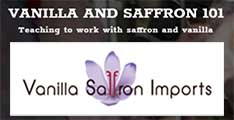Jill Dutton. Between the turn of the century through about the 1960s, the first Basques arrived from Europe for the gold rush. They found that raising sheep offered secure money so many Basques in Southern California eventually moved eastward to high desert areas where there’s good grazing for sheep. “Although the Basques weren’t traditionally sheepherders in the homeland, they were often raised on small sustenance farms and knew about animal husbandry,” Marie Louise Lekumberry of J.T. Basque Bar and Dining Room told me. Lekumberry said that knowledge, combined with a strong work ethic and an ability to endure solitude in the mountains with the sheep led a lot of young Basque men to immigrate to Nevada to herd sheep. Lekumberry’s father was one of these men and immigrated there in 1947.
She says once a town would get one or two hundred Basques, “some enterprising couple would either lease or buy an old hotel and turn it into a boarding house,” creating a home away from home for newly arrived immigrants or those between jobs. It began with the boarding houses serving three square meals a day with long tables. Then they eventually opened to the public. “At six o’clock every night, the dinner bell rang and all the sheepherders and town folk would just sit down for dinner.” One meal was served per day and it was homestyle, serving whatever the kitchen was cooking that day.
The meals are made according to traditional Basque recipes using local ingredients -- so the coastal Basque communities served lots of seafood. In turn-of-the-century Nevada, the meals were heavy on meat and potatoes. The foods the sheepherders were cooking made its way down to the Basque hotels: simple soups and salads passed around the table followed by an abundance of stews and beans and fried potatoes. The Basques, Lekumberry told me, “like any other peasant culture,” eat all of the animal they butcher, so many of the stews contain organ meats. There’s oxtail stew and beef tongue stew, plus recipes incorporating sweetbreads, pigs feet, and tripe.
There are many ways to experience Basque culture in Northern Nevada. Experience the family dining at a Basque restaurant; sample a Picon Punch, a brandy cocktail with grenadine and Amer-Picon bitters; visit a Basque festival; or study their culture at a Basque library or monument.
1. Visit Jon Bilbao Basque Library In Reno
Located at the University of Nevada, the William A. Douglass Center for Basque Studies houses the Basque Library, one of the world’s largest collections of Basque-related materials with 55,000 volumes. Founded in the late ’60s, the library supplies researchers of Basque studies with documentation and information and also creates and distributes publications on Basque culture and history.
2. See The National Monument Of The Basque Sheepherder In Reno
This monument is situated in Rancho San Rafael Regional Park. It represents a sheepherder carrying a lamb and has a map that illustrates the Basque settlement in the United States.
3. Participate In Festivals In Elko And Reno
The Elko Basque Clubhouse in Elko hosts an annual National Basque Festival. What started as a local gathering in 1964, the festival is a celebration of Basque heritage. The festival kicks off each year with an opening event at the Elko Basque Clubhouse where visitors and Bascos get a glimpse of the weekend’s festivities. There are live dance performances, traditional Basque music, wood chopping competitions, a bread making contest, parade, plus plenty of food and the famous Picon Punch. An interesting tip: Festival goers wear all white clothing with the intention of cutting loose and spilling wine on themselves. It’s a sign of a successful festival, and a badge of honor, to have wine-stained clothing at the end of the day.
Or immerse in the culture at the Reno Basque Festival for a full day of celebrations. Taste the cuisine and experience the dance, music, and other traditional activities like weight carrying competitions.
4. Enjoy Basque Dining Across Northern Nevada
J.T. Basque Bar and Dining Room in Gardnerville is an award-winning, family-owned business. For the full experience, order the Basque family-style dinner. You’ll get large servings of soup, salad, stew, beans, French fries (seriously, all of these separate plates arrive before the entree), plus a bottle of red wine, coffee, and ice cream for dessert. For the entree, choose from top sirloin steak, lamb shoulder steak, sweetbreads, pigs feet with tripe, and other dishes. It’s a memorable -- and filling -- event.
Reno is home to Louis’ Basque Corner, open since 1967. The servers wear traditional Basque clothing, giving an even more authentic feeling to the visit. Sip a Picon Punch at the upstairs bar -- the restaurant’s signature version is made with grenadine, Picon liqueur, club soda, and a splash of brandy with a lemon twist -- then enjoy another family dinner that includes soup of the day, French bread, Basque beans, salad, French fries, a first course, a main entree, dessert, and a glass of house wine. For the entree, try the sweetbreads, either sauteed with garlic, peppers, mushrooms, and onions or prepared in a red wine and mushroom sauce.
Also in downtown Reno is the Santa Fe Hotel, which opened in 1949 and was home to many immigrants seeking community. The hotel is gone but the restaurant is still a bustling place for family-style dinners served with signature entrees such as the pork loin Milanese, Campo Viejo beef tongue, or braised oxtail.
The Villa Basque Cafe in Carson City is home to Pete’s Famous Basque Chorizo. The recipe has been passed down for generations and utilizes naturally air-dried chorizo made from pork flavored with garlic, paprika, and other spices. Order some chorizo to go, or try it cooked in an omelet, smothered in gravy on the Spuds and Biscuit, or in the Basque Chorizo Con Huevos.
At Toki Ona Bar and Restaurant in Elko, Basque and American favorites are served in large portions. Sip a Picon Punch or Kalimotxo, a mixture of wine and cola, at the bar, or enjoy dinner favorites that include a variety of seafood, steaks, and chicken dishes.
The Star Hotel, also in Elko, opened in 1910 as a home away from home for Basques. There were 11 rooms, one bath, and heat from wood stoves. The Star gave herders a place to stay until spring. As business increased, the building was added onto, doubling in size. Meals were served family-style in the copper-ceiling dining room, where a waitress rang a large bell that was heard throughout the hotel. There weren’t any menus and everyone ate the day’s special, which might include leek soup, garlic soup, salt cod in a tomato and pimento sauce, clams and rice, garbanzos with chorizo, rice with chicken, rice pudding, and flan or fruit. Later, spaghetti and beans were added as side dishes. The family-style service and the calling dinner bell remain today.
In Winnemucca, the Martin Hotel, established in 1898, is listed on the National Register of Historic Places. All of the dinners are served in the traditional Basque style with servings of soup, salad, beans, side dishes, home-baked bread, hand-cut French fries, and their own Martin bread pudding accompanying your entree of choice. For the entree, choose a pasta dish such as the Pasta Conchiglie de la Polo, with chicken, garlic, onion, asparagus, and mushrooms sauteed in white wine and served with Alfredo sauce over pasta shells. Or try the traditional Basque lamb chops or sweetbreads, which are battered and fried golden brown and served with homemade country gravy.



 Enviar a un amigo
Enviar a un amigo Añadir comentario
Añadir comentario








